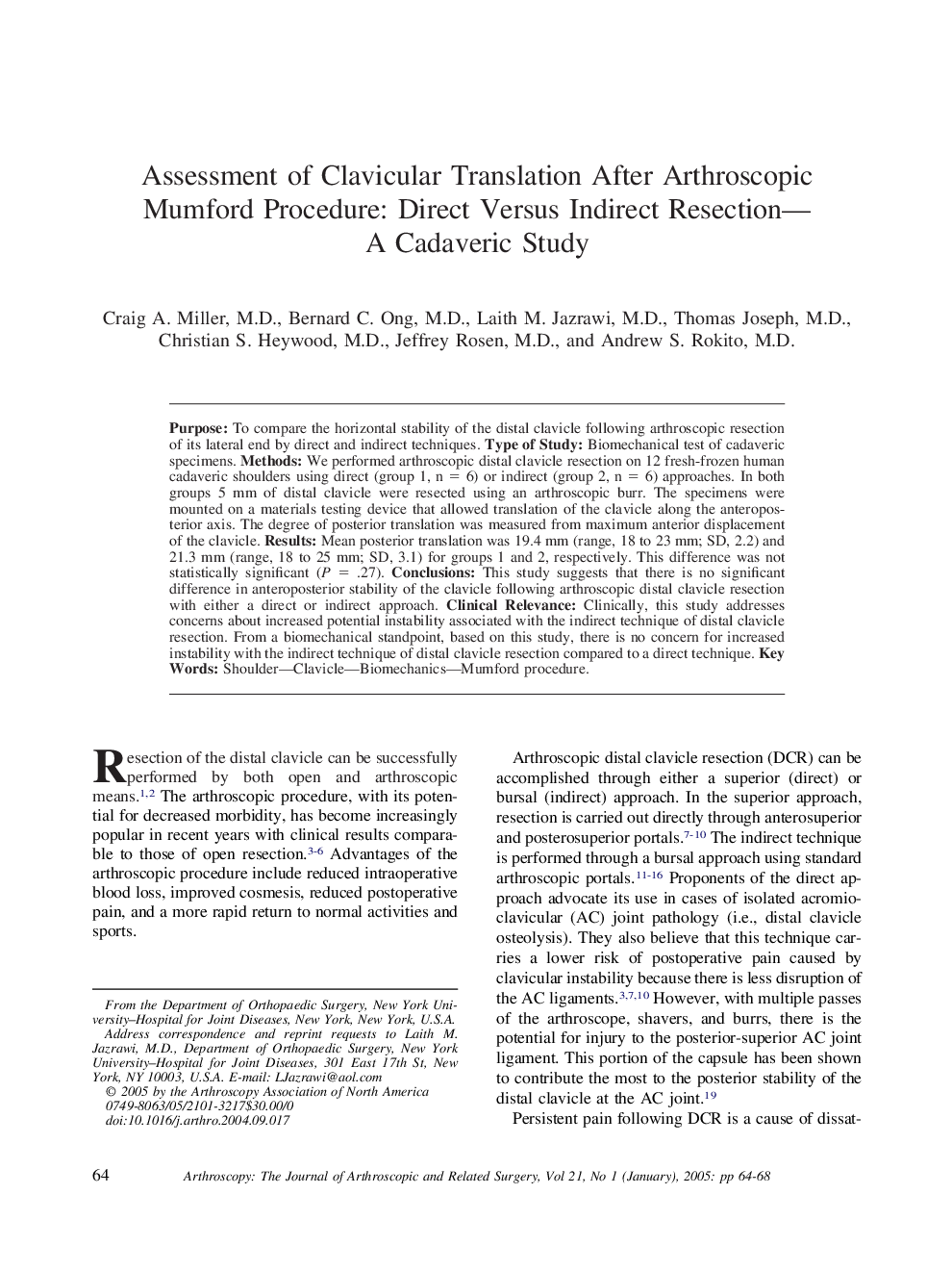| Article ID | Journal | Published Year | Pages | File Type |
|---|---|---|---|---|
| 10079277 | Arthroscopy: The Journal of Arthroscopic & Related Surgery | 2005 | 5 Pages |
Abstract
Purpose: To compare the horizontal stability of the distal clavicle following arthroscopic resection of its lateral end by direct and indirect techniques.Type of study: Biomechanical test of cadaveric specimens.Methods: We performed arthroscopic distal clavicle resection on 12 fresh-frozen human cadaveric shoulders using direct (group 1, n = 6) or indirect (group 2, n = 6) approaches. In both groups 5 mm of distal clavicle were resected using an arthroscopic burr. The specimens were mounted on a materials testing device that allowed translation of the clavicle along the anteroposterior axis. The degree of posterior translation was measured from maximum anterior displacement of the clavicle.Results: Mean posterior translation was 19.4 mm (range, 18 to 23 mm; SD, 2.2) and 21.3 mm (range, 18 to 25 mm; SD, 3.1) for groups 1 and 2, respectively. This difference was not statistically significant (P = .27).Conclusions: This study suggests that there is no significant difference in anteroposterior stability of the clavicle following arthroscopic distal clavicle resection with either a direct or indirect approach.Clinical relevance: Clinically, this study addresses concerns about increased potential instability associated with the indirect technique of distal clavicle resection. From a biomechanical standpoint, based on this study, there is no concern for increased instability with the indirect technique of distal clavicle resection compared to a direct technique.
Keywords
Related Topics
Health Sciences
Medicine and Dentistry
Orthopedics, Sports Medicine and Rehabilitation
Authors
Craig A. M.D., Bernard C. M.D., Laith M. M.D., Thomas M.D., Christian S. M.D., Jeffrey M.D., Andrew S. M.D.,
